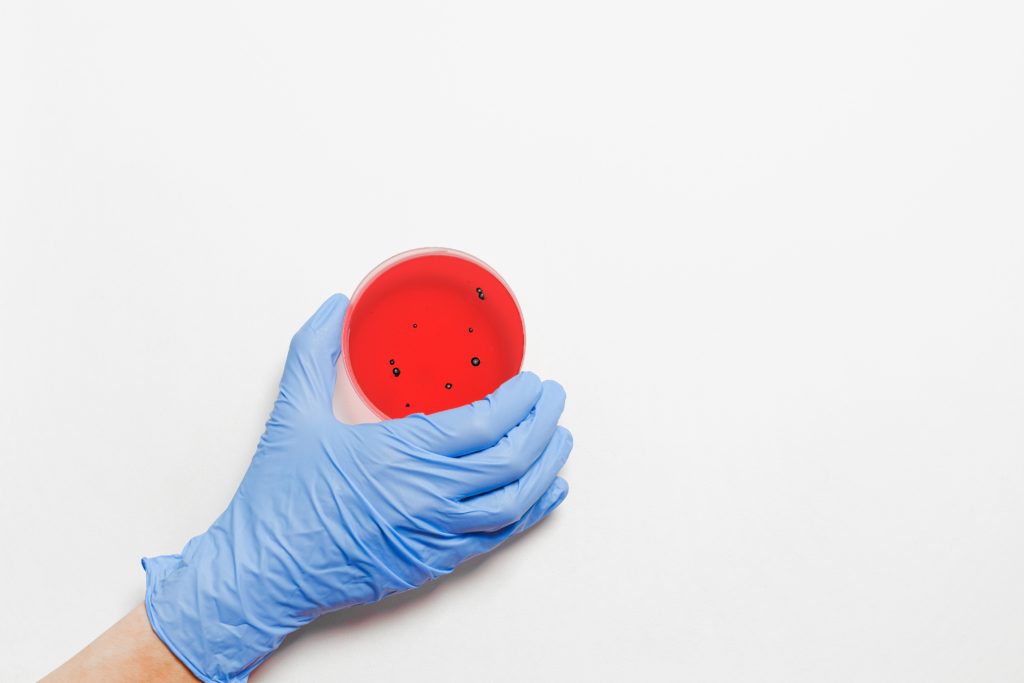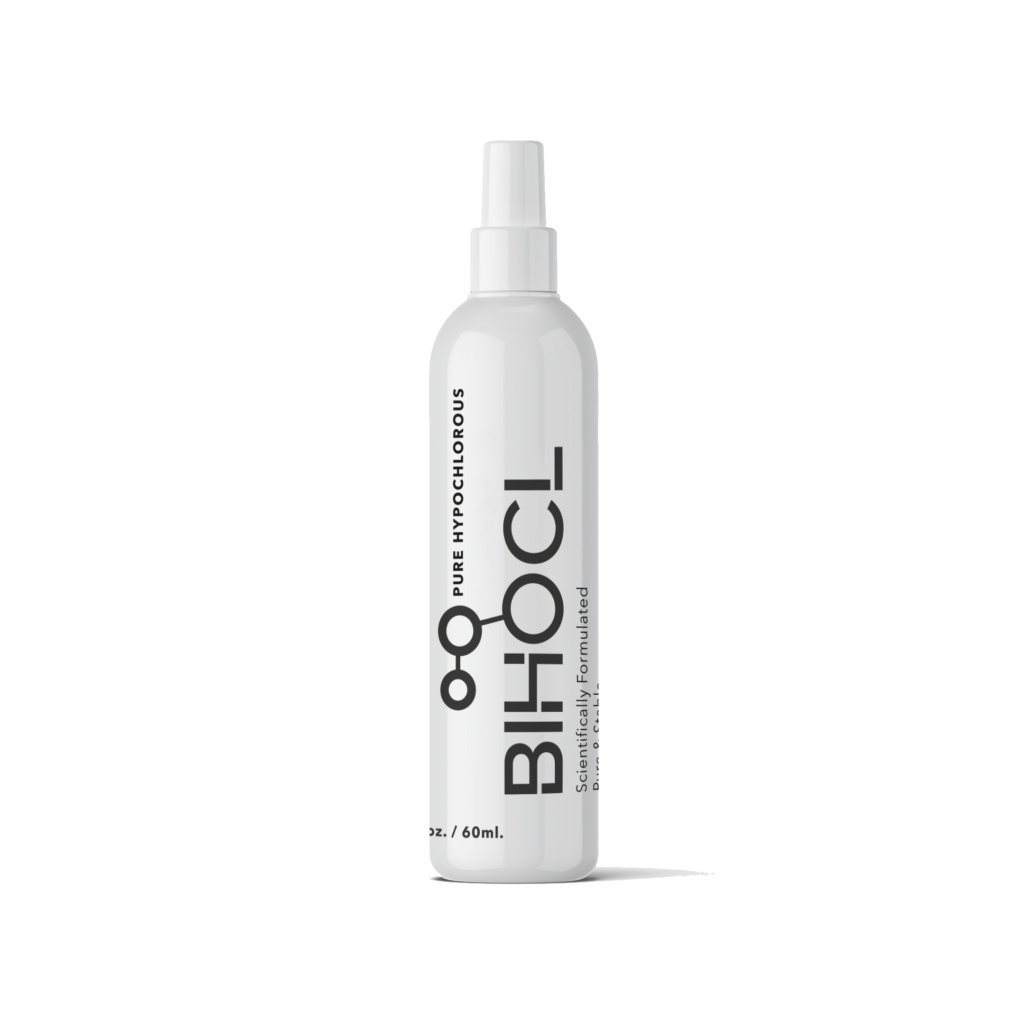This post Eyegiene the Natural Way with Hypochlorous Acid (HOCl) first appeared on MyDryEye.ca
It was written by Dr. Diana Nguyen.
Please visit MyDryEye.ca to visit the original post.

Make room for a new promising addition to your dry eye care – hypochlorous acid (HOCl). It has a long history in the medical field with uses in wound care before antibiotics were available. Fast forward to the present day and HOCl is used in several healthcare industries ranging from dentistry, dermatology and optometry.
HOCl has become a common disinfectant in healthcare because of its gentle yet effective power. It has the same active ingredient as bleach but holds a different chemical structure. As a result, it neutralizes much quicker and it is not harmful unlike bleach and alcohol.
Interestingly, pure HOCl is also produced by our body as an immune response. Its oxidizing properties are released by our immune cells which helps kill microorganisms.
HOCl Role in Eyegiene
Blepharitis is a common condition seen in dry eye patients. A large bacterial load affecting the skin of the eyelids, base of lashes and eyelash follicles can cause irritation and inflammation. HOCl is highly effective against bacteria and can be provided as a treatment option for eyelid hygiene (eyegiene).
One study tested HOCl’s ability to reduce bacteria on the ocular skin. After 20 minutes with the HOCl hygiene solution, there was reduction in gram-negative, anaerobic and gram-positive bacteria. HOCl dramatically decreased staphylococcus strains by 99.6% on 71 eyes. The application of HOCl also reduced the bacterial load of susceptible and/or resistant strains to antibiotics.

However, full eradication of bacteria can be harmful to the body because some bacteria strains protect us against pathogens. HOCl preserves the diversity of microbial species and does not eliminate resident commensal bacteria. It demonstrated a clinically significant reduction of >90% in overall bacterial load.
Another publication determined HOCl’s efficacy against bacterial and viral conjunctivitis. Total resolution of bacterial conjunctivitis occured in 64 out of 65 cases and complete and rapid resolution of viral conjunctivitis symptoms.
HOCl is a powerful agent against pathogens and has multiple uses within optometry and other medical fields. It is shown to be a non-toxic and safe treatment option for patients with blepharitis and dry eyes.
Considerations with HOCl
Purity and stability are important factors when choosing HOCl products. Many solutions on the market employ buffers and stabilizers to maintain a certain pH range of 3.5-6.5 as the proper concentration. When the pH is outside of this range, dissociation occurs and HOCl may not be as effective against pathogens. Typically, the buffers contain a form of sodium hypochlorite (bleach) which damages tissues and is highly irritating to the eyes and skin. Secondly, the stability of HOCl can vary depending on the product. It’s best to find a product that has a longer shelf life to maximize use and ultimately, comfort when applying it.
HOCl Option in Canada

Briotech HOCl (BIHOCl) 0.018% maintains a strict pH range of 4.4 which is maintained over time and does not include any bleach in its formulation. As a result, BIHOCl is non-irritating, gentle on the eyelids and does not have harmful side effects.
BIHOCl excels with its stability with a shelf life of 3 years if left unopened and 6 months once opened. This exceeds all products on the market and is an economical choice for patients and clinics. It has also shown to demonstrate efficacy and stability in temperatures over 30°C.
How HCOl is Made

Under strict quality-control procedures, water and salt are used to create a specific brine solution and then it is passed through a proprietary, electrolytic chamber. The finished product is a weak acid solution with powerful benefits. The electrically active HOCl maintains efficacy to eradicate offending microbes and is a much needed addition to eyelid care and dry eyes.
References
- Stroman DW, Mintun K, Epstein AB, et al. Reduction in bacterial load using hypochlorous acid hygiene solution on ocular skin. Clin Ophthalmol. 2017;11:707-714. Published 2017 Apr 13. doi:10.2147/OPTH.S132851
- Peter S Adamson, Hendrik Roos, Jon von Holdt; Treatment of bacterial and viral conjunctivitis with topical ultrapure stable hypochlorous acid (HOCl): a clinical evaluation and treatment response in 79 cases. Invest. Ophthalmol. Vis. Sci. 2015;56(7):280
- Wang L, Bassiri M, Najafi R, Najafi K, Yang J, Khosrovi B, Hwong W, Barati E, Belisle B, Celeri C, Robson MC. Hypochlorous acid as a potential wound care agent: part I. Stabilized hypochlorous acid: a component of the inorganic armamentarium of innate immunity. J Burns Wounds. 2007 Apr 11;6:e5. PMID: 17492050; PMCID: PMC1853323.
How Stress Shows Up in Your Eyes
Stress shows in your eyes: burning, twitching, watery or red. Discover the link between cortisol and tear film instability and explore breathing, blinking and sleep strategies to break the cycle.
What Your Eyes Are Telling You About Your Hormones
Dry, burning eyes often signal shifts in estrogen, progesterone or androgens. Learn how hormones influence tear production, why women are more affected and how to nourish your glands for lasting comfort.
In‑Office Treatments for Dry Eye: What Really Works?
Dry eye relief goes beyond drops. Learn how in‑office treatments like LipiFlow, IPL and RF unclog glands and restore comfortable vision. Discover the science behind these procedures and how to maintain results at home.























